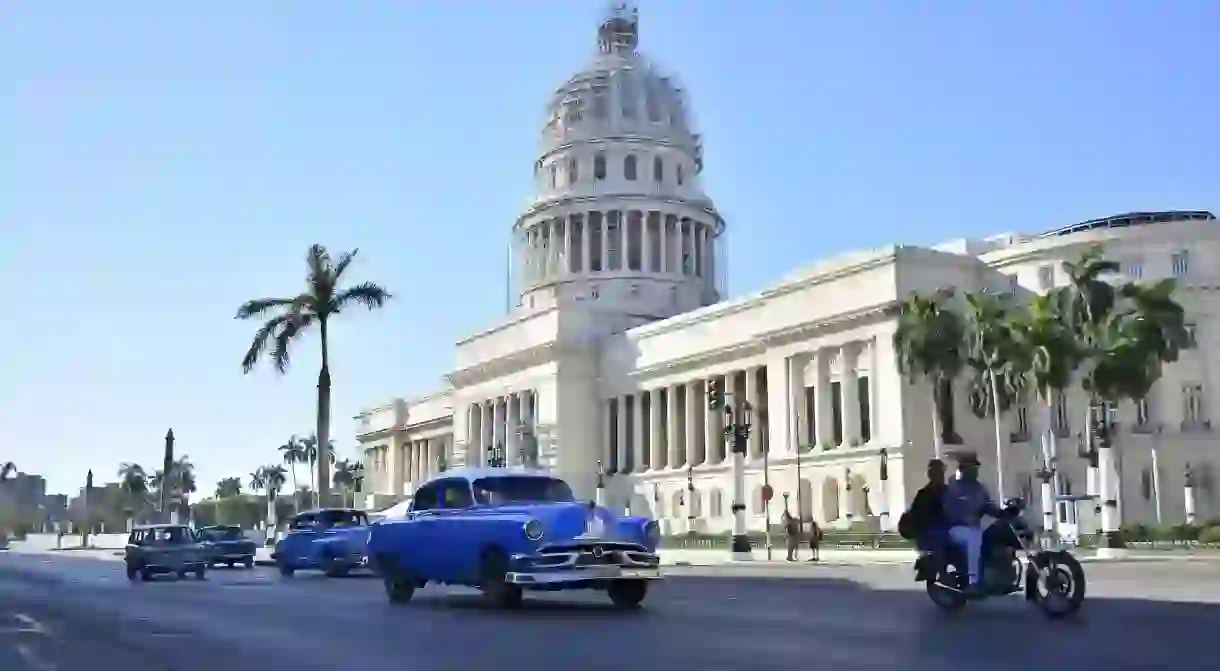10 Things to Know Before Visiting Havana, Cuba

The Cuban capital is a fascinating place, and one that’s easy to spend a week in. Here’s what to know before you go to Havana.
Cuba is still a communist country
The Cuban government remains the same as the one which overthrew the dictator Fulgencio Batista in 1959. Fidel Castro might be dead, but his brother Raul remains in power. Despite recent economic reforms that allow certain kinds of private enterprise, Cuba is still a communist country.
Change might be coming
These economic reforms have allowed for an explosion in entrepreneurship, from taxis to restaurants to fashion designers. Some commentators believe that further reforms might come when Raul Castro resigns as leader.

There are two currencies
Cuba is a rarity in that there are two official currencies on the island. The first is the Cuban peso (CUP), in which state workers are paid. The second is the Cuban convertible peso (CUC) which is used by tourists and those locals that have access to it. Make sure you familiarize yourself with the coins and notes so you don’t get ripped off; one CUC is worth around 25 CUP.

It’s best to stay in peoples’ houses rather than hotels
Another quirk of Cuba is that the main accommodation option is a kind of B&B known as a “casa particular.” Those that have a spare room are allowed to rent it out if they meet certain standards imposed by the government, and staying in them is a great way to get to know the locals.
There is no advertising
One thing that might be shocking is the lack of visual contamination from advertising in Cuba. You might see the occasional government billboard, but it’s a rarity even in Havana. In fact it’s quite a refreshing break from the bombardment of adverts in most countries.
The United States has imposed a trade embargo for decades
Since 1958 there has been a US embargo on Cuba in some form, and it was extended to include almost all imports in 1962. This has caused Cuba to be isolated from global markets and reliant on isolated deals with major allies such as the Soviet Union and Venezuela.

There are hardly any familiar brands
Due to restrictions on trade, you won’t see many recognized brands in Cuba. Heineken beer and the occasional can of Coca Cola aside, you’ll have to get used to eating and drinking local stuff, like Cristal beer.
Make sure you take everything you need
Travelers to most countries can reasonably expect to be able to buy anything that they forget to pack on arrival. This is not the case in Cuba, where everyday essentials such as toothpaste and shampoo can be hard to get hold of. Pack wisely.

Yes, people do still drive 1950s cars
If you thought that the photos were only taken for postcards, you’re wrong. The trade embargo means that new cars have been incredibly difficult to get in Havana, and most vehicles are old and patched up. You’ll see old 50s American cars, Soviet cars from the 70s and 80s, and a few more modern ones imported in recent years.
Don’t miss the Malecon
On the map it looks like a busy road facing the sea, but the Malecon is incredibly important to Havana locals. Every night of the week it is busy with fishermen, dating couples, and groups of friends who gather to share a bottle of rum by the sea. Don’t miss out on some of the best people watching in Cuba.













